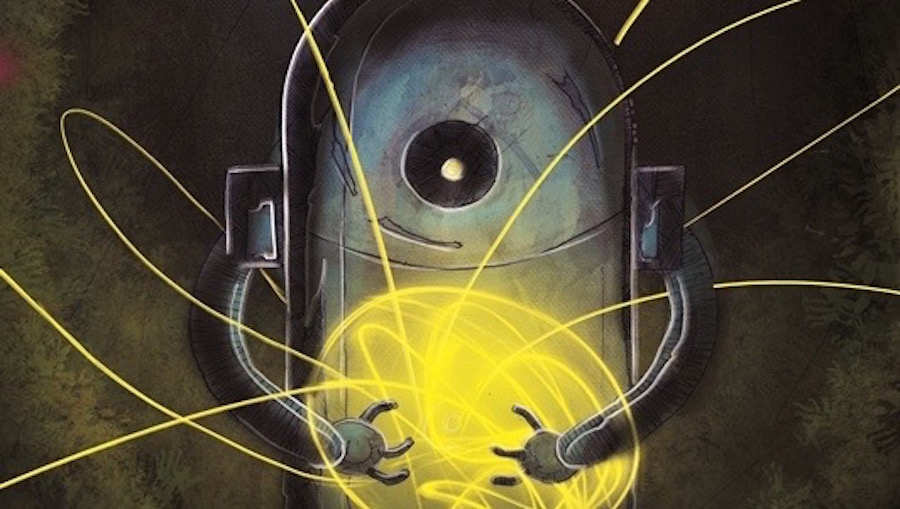Friendship can light any darkness.
It happens to everyone: You’re in your home, safe in your bed, and, suddenly, you bolt upright. Something has moved, something made a noise, something is out there. You turn your light on, and you feel better. You may check your room, peek out the window, take a light-footed stroll through the house, but you allay your fears, the insidious fear of familiar spaces in the dark. Even places we’ve lived in our whole lives become otherworldly and alien when the lights go out; it’s part of us being creatures addicted to sight. The worst is being alone in the dark: no way to bring light and no one to comfort you. That’s the underlying thought behind Lyndon White’s all-ages book, Sparks and the Fallen Star, an adventure in total darkness, where you find that the bravest thing, sometimes, is just to stand with someone.
This book is a little bit Wall-e. Not just in the fact that we have a quirky, little robot protagonist, but in that the story allows for such grand visual storytelling. There’s only narration – no dialogue – and White allows the emotional journey of his characters to exist before he comes in to explain. This faith in his story is ambitious and heartening, trusting in the reader to be intrigued and captured by the spell. The plot is a hero’s journey, but told from the side a bit. There’s plenty to keep readers engrossed, and it’s the perfect kind of contemplative experience I could see sharing with my son before bedtime some night (once he’s old enough to process, of course). There’s a sense of accomplishment, wonder, and contentment you get when you reach the last page, and that’s the kind of magic that will stay with you into your dreams.
I’m a big fan of the artwork in this book. The style has an intentional, impressionistic, squiggly quality that makes it feel approachable to all comers, and I feel it would be welcoming to children to begin drawing their own stories. This work is approachable, and yet the content rises above what you’d typically expect. Lyndon White uses the dark pages wonderfully. It feels like the style of Batman: The Animated Series, where the animators used black paper and drew everything in negative. Coupled with the loose style, it allows the fewer details to engage the imagination more and let the reader fill in the world. It takes a good eye to know how little you really need to convey your story, and doing it in this way makes the tale feel larger than any book. It’s a living, breathing thing that uses the audience to complete itself. It’s fantastic and a perfect example that sometimes less is worth more.
I would urge everyone to check this book out, especially parents. This is a good read that is presented wonderfully by a talented creator. If you liked Wall-e, you owe it to yourself to jump in.
Share the stories that move you.

